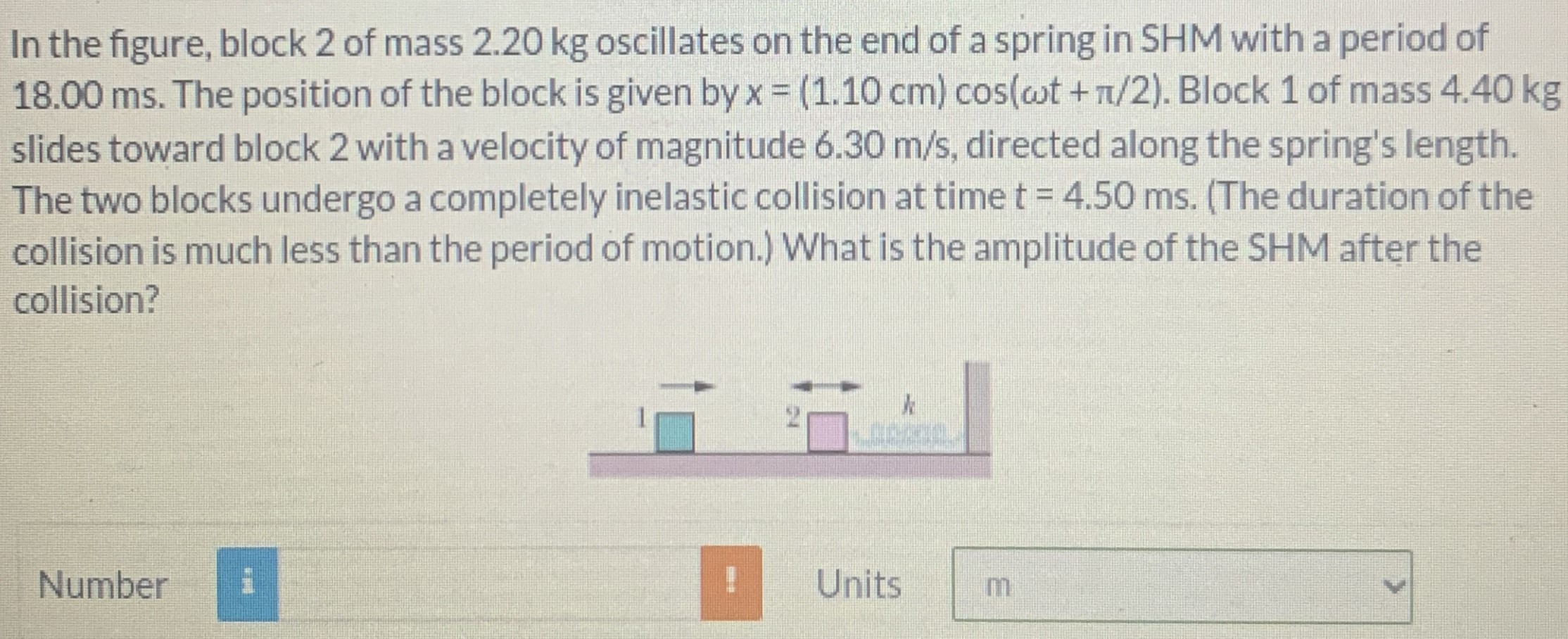In the figure, block 2 of mass 2.20 kg oscillates on the end of a spring in SHM with a period of 18.00 ms. The position of the block is given by x = (1.10 cm)cos(ωt + π/2). Block 1 of mass 4.40 kg slides toward block 2 with a velocity of magnitude 6.30 m/s, directed along the spring's length. The two blocks undergo a completely inelastic collision at time t = 4.50 ms. (The duration of the collision is much less than the period of motion. ) What is the amplitude of the SHM after the collision? Number Units
